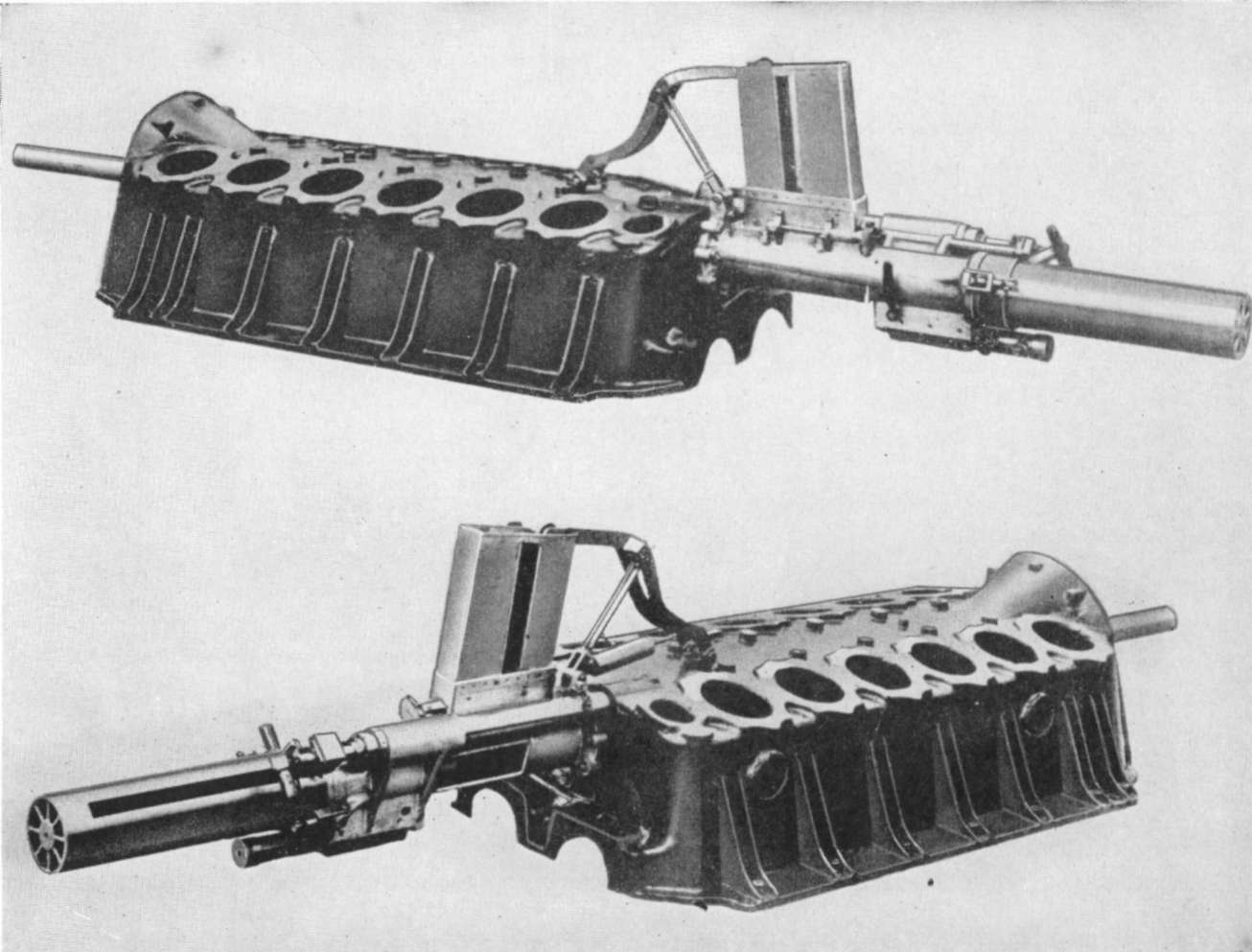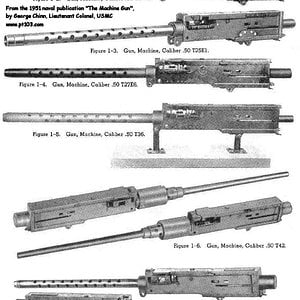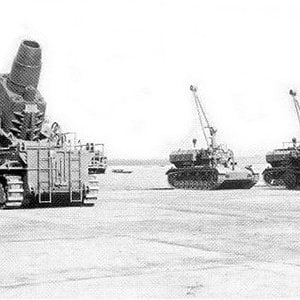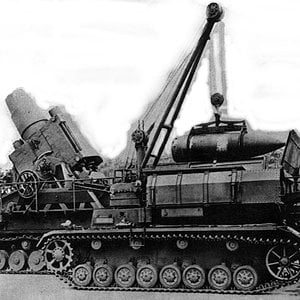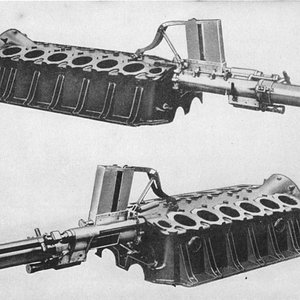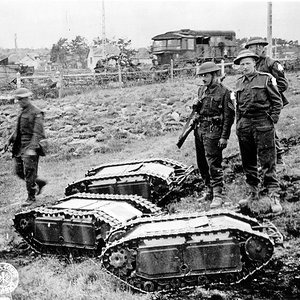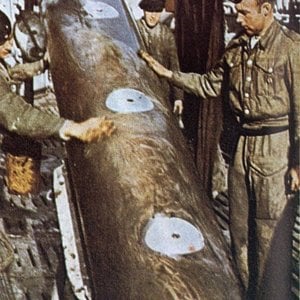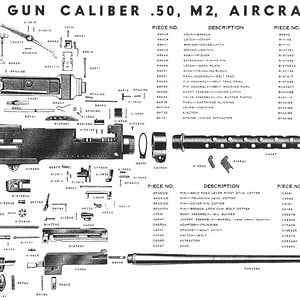Navigation
Install the app
How to install the app on iOS
Follow along with the video below to see how to install our site as a web app on your home screen.
Note: This feature may not be available in some browsers.
More options
You are using an out of date browser. It may not display this or other websites correctly.
You should upgrade or use an alternative browser.
You should upgrade or use an alternative browser.
Puteaux 37-mm Aircraft Cannon, Mounted in the Cylinder Block of a Hispano-Suiza Engine to Fire through the Propeller Hub.
rear after the lugs on the breech lock have been rotated, thus freeing the two pieces. As the barrel starts to battery, two extractors, one on each side of the breech lock, cling to the rim of the cartridge as the counterrecoiling chamber is literally pulled off the empty case.
At a point approximately three-quarters of the way home, a stud on the barrel causes one extractor to be disengaged. At the same time it brings the ejector to bear on the base of the newly released cartridge and pivots the empty case out the ejection port. If the trigger remains depressed a tenth of a second after the barrel reaches battery, a sear is tripped that starts the bolt into counterrecoil. A round that by now has dropped in the feedway by gravity is chambered and the piece is again locked and fired.
The delay before the bolt was put into counterrecoil made this system of operation notoriously slow, but as high speeds were seldom demanded of cannon, it was quite popular with designers as a reliable method of operating big-caliber automatic mechanisms. Not until 7 November 1917, did firing reach a state that the weapon was thought capable of successful air application. Leading French airmen, while looking forward to using perfected automatic cannon, still mounted the inferior semiautomatics as they felt the former weapon was still not sufficiently proved.
Commandant Gamier and M. Stalporte of the Puteaux Arsenal are credited with the devisement of the full automatic aircraft cannon but. like many other things in process of development at the time, it never saw service in the war. It was not until 7 September 1918, that the French
rear after the lugs on the breech lock have been rotated, thus freeing the two pieces. As the barrel starts to battery, two extractors, one on each side of the breech lock, cling to the rim of the cartridge as the counterrecoiling chamber is literally pulled off the empty case.
At a point approximately three-quarters of the way home, a stud on the barrel causes one extractor to be disengaged. At the same time it brings the ejector to bear on the base of the newly released cartridge and pivots the empty case out the ejection port. If the trigger remains depressed a tenth of a second after the barrel reaches battery, a sear is tripped that starts the bolt into counterrecoil. A round that by now has dropped in the feedway by gravity is chambered and the piece is again locked and fired.
The delay before the bolt was put into counterrecoil made this system of operation notoriously slow, but as high speeds were seldom demanded of cannon, it was quite popular with designers as a reliable method of operating big-caliber automatic mechanisms. Not until 7 November 1917, did firing reach a state that the weapon was thought capable of successful air application. Leading French airmen, while looking forward to using perfected automatic cannon, still mounted the inferior semiautomatics as they felt the former weapon was still not sufficiently proved.
Commandant Gamier and M. Stalporte of the Puteaux Arsenal are credited with the devisement of the full automatic aircraft cannon but. like many other things in process of development at the time, it never saw service in the war. It was not until 7 September 1918, that the French

